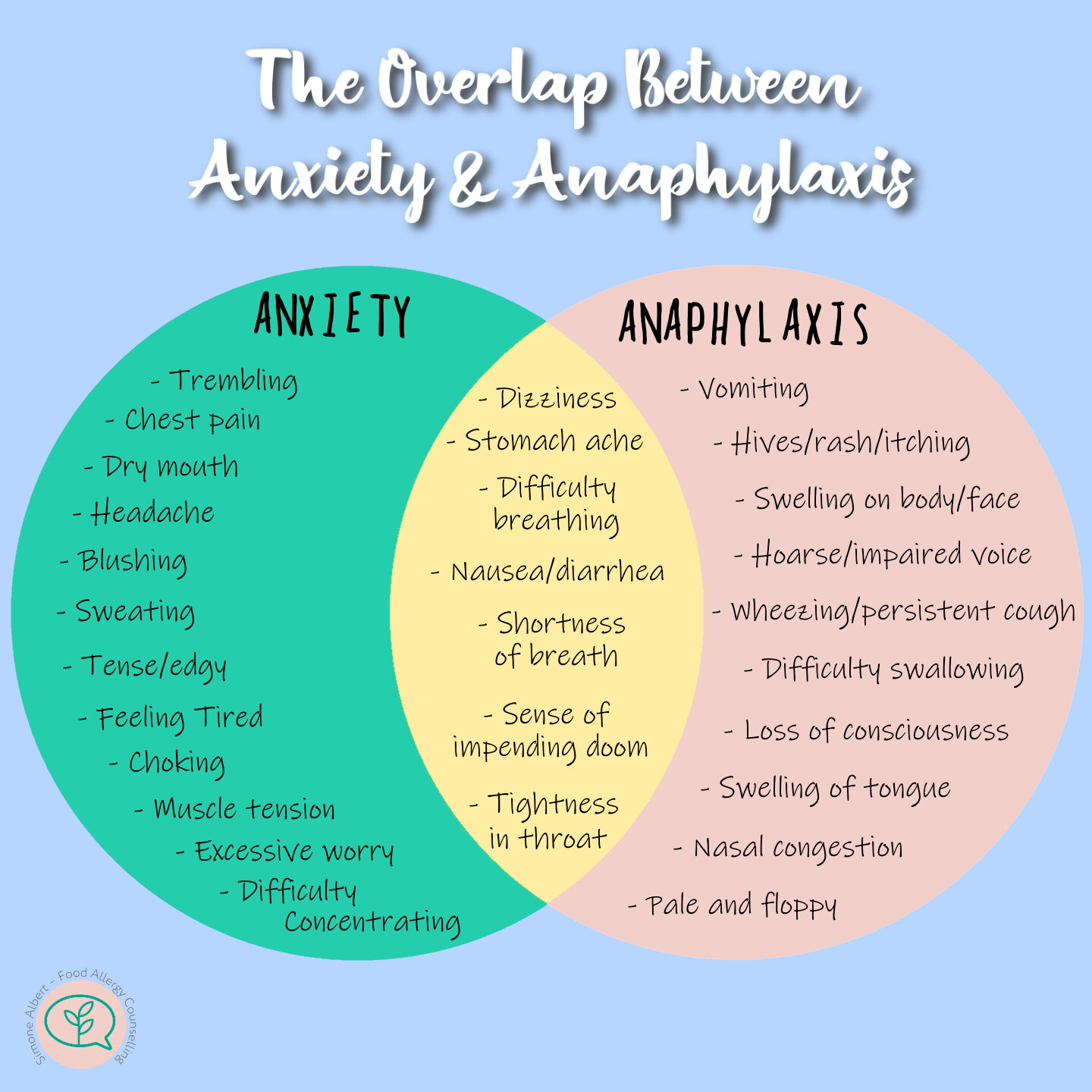How Can Anxiety and Anaphylaxis be confused?
Anxiety when living with allergies can be overwhelming and confusing especially when the physiological response in the body can be very similar to that of an anaphylactic reaction. Understanding and helping your child understand anxiety is empowering.
Food allergies can be a walk in the park for some and for others the worry, overwhelm and fear can be debilitating. One is no more right or wrong than the other. It is each and everyone’s personal journey. Due to the unpredictable nature of food allergies, anxiety can be one of the strongest emotions that can be felt by people living with food allergies.
Understanding our emotions gives us power to not only stand up to them but to feel empowered especially as a child and teen.
Although anxiety is a normal emotion just like all of our other emotions, anxiety is one of our ‘big’ emotions and therefore is sometimes hard to work through, give space to and live with. It has the ability to make us feel uncomfortable and triggers strong physiological responses in our body. Some of these responses match and overlap very closely to the response of an anaphylactic reaction. And this then adds another level of worry, heightened anxiety and panic to an already stressful and overwhelming situation.
Anxiety is part of our fight or flight response that is set up for us as humans to protect us, keep us safe, and help us stay focused and alert. Our fight or flight response is our body’s normal physiological reaction to situations where we are experiencing more extreme anxiety to a ‘perceived’ threat (aware or conscious) to a ‘worried’ thought.
Knowing that anxiety in itself is not a weakness and is in fact an emotion that is common to everyone (including teachers, doctors, nurses, athletes, celebrities, rock stars) normalises the anxiety. Teaching your child to question that thought that is driving the worry helps your child understand their anxiety and your child is able to more readily work through their anxiety. This supports our children to remain calm in worrying and anxious situations such as when they are eating out in a restaurant, at school when our children are eating amongst their friends and allergens, when they are about to start primary school or high school, when they are leaving for camp, when they are going to a friends birthday party, when they are going to a sleep over at a friend’s house.
Teaching our children powerful strategies enables worry to lose its power and where they can boss their worry back.
Strategies to combat worry resets the fight and flight sympathetic nervous system where the amygdala in our brain is taking control and can hijack our headspace, our children’s headspace. Our amygdala is a ‘doer’ not a ‘thinker’. This is great if there is actual danger but not so great if there’s not. Teaching our children in calmer moments (when the iron is ‘cold’) to build in a ‘pause’ into their heightened worried times, allows them to stop to take a deep breath and calm themselves. Teaching them to breath in like they are ‘smelling the flowers’ and a long breath slowly out (for double the inhalation breath) like they are ‘blowing out candles’ will take your child out of the fight or flight headspace and can be an extremely powerful technique for combatting anxiety and panic attacks.
If your child is sitting at the school lunch table with their friends all eating lunch together and their allergens are present they may become overwhelmed and panicked and experience heightened anxiety. When this happens the ‘worry’ takes us into the ‘future’ (I’m going to have a bad reaction, I’m going to have an anaphylactic reaction. I can’t breath. My heart is racing so fast. I can’t swallow properly) or to the ‘past’ (I’ve had a stomach ache like this before just before I had a reaction. Last time I had tightness in my throat like this I had an anaphylactic reaction). If ‘pausing’ at these heightened times of worry and practicing these simple techniques (just like when training for sport to get the action perfected) will bring your child back to the ‘present’ moment of awareness. Explaining to our children that they are able to take control and bring themselves back to the present moment is very powerful. Mindfulness exercises such as these are proven strategies where your child, teen or yourself can stand up to their worry and anxiety and take back control of the situation, helping reduce the impact that anxiety is playing in their lives.
When our children realise that they are not alone in this we teach them to regain the power over their mind. Learning the symptoms of anxiety outside of food times allows allergy children to get to know their bodies better by body scanning their body and learning to understand the physiological changes that happen when they are feeling anxious. The ideal is to never fully rid ourselves of anxiety but to learn to dial it down and live side by side with it. Anxiety is not to be feared. It is a healthy sign that you are doing something really brave. It is an emotion when you are in control of it keeps you focused and motivated.
Yours in health & happiness
xo Simone
If anxiety is preventing you from living the life you desire, then it may be time to seek professional help. Seeking support is sometimes the hardest first step.

